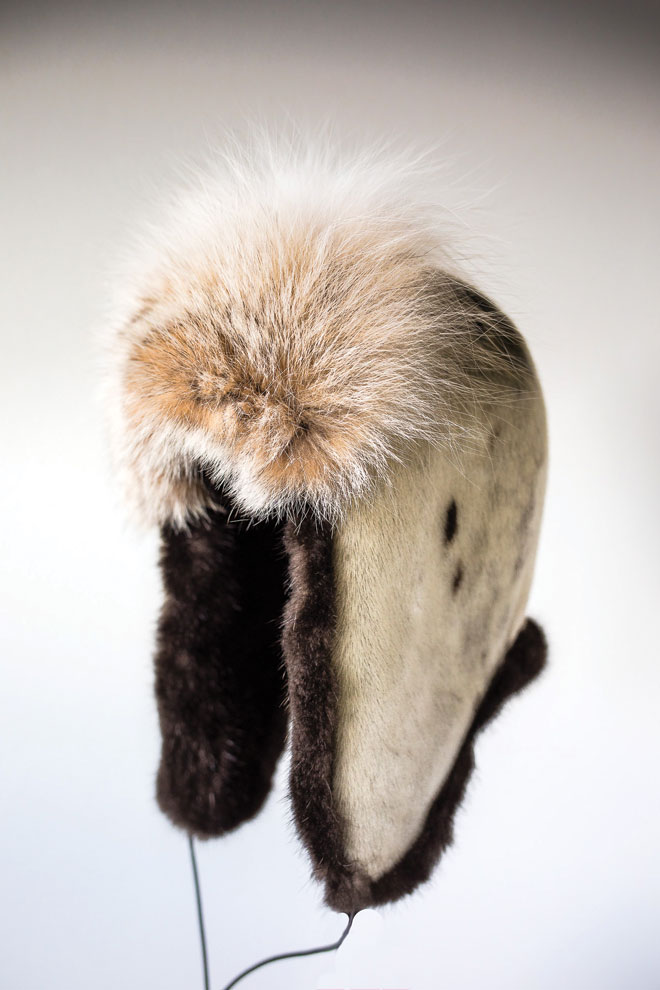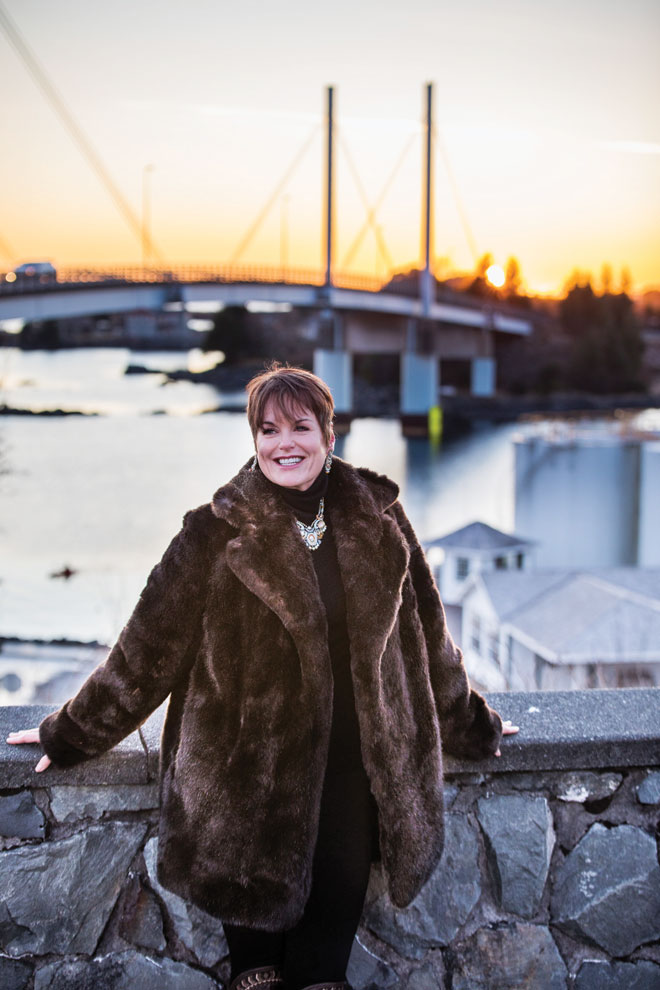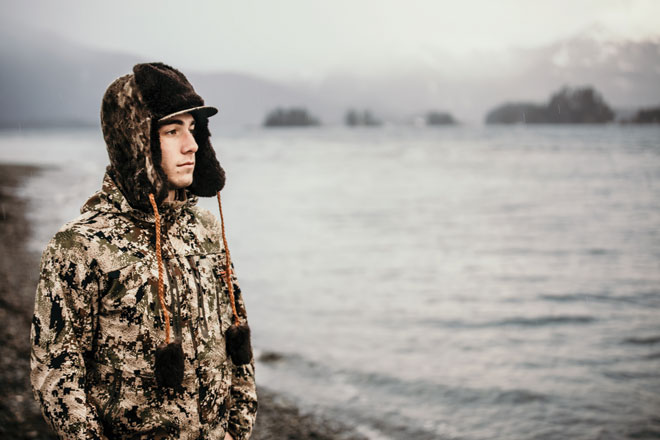
This beautiful handmade sea otter and seal-fur trapper hat is both windproof and water resistant.
Fur: Art, Harvest, and Sustainability
Blog by Melissa Norris
Photos by Caitlin Fondell
Art is often an expression for a way of life, and that could not be more true for fur artist Robert Miller of Sitka. Robert is a Native Alaskan, specifically Tlingit, a member of the Kiks.adi clan. Their 10,000-year-old culture is rich in heritage and techniques that appeal to Robert, who well into his adulthood began to feel an urge to become more active in their customs. He dreamt of starting a business where he would create beautiful, Alaskan fur products, while practicing sustainability, helping others, and contributing to the subsistence lifestyle of his community. Beautiful fur products are exactly what Robert creates and I was an instant enthusiast. I had the honor of talking with Robert to learn more about what his mission means to him, and in no time flat, I became an even bigger fan.
“I was wanting to get connected to my culture more so I figured what better way to do it than to dive in and learn some art? My great-grandmother had sewn moccasins and sold them on the streets in Sitka for an income a long time ago, and that’s always been a part of me. I wanted to figure it out so I dove in head first and did it with zero knowledge. The only thing I knew how to do was to go hunting,” he said with a chuckle.
Robert has been an avid hunter his whole life, as is the way for many Alaskans growing up here, but he did not shoot his first marine mammal until eight years ago when he took this endeavor on with fervor. His long history with hunting ties him to the fur world. And now years later he excels at his craft, and his business, Sea Fur Sewing, is clearly on the map.
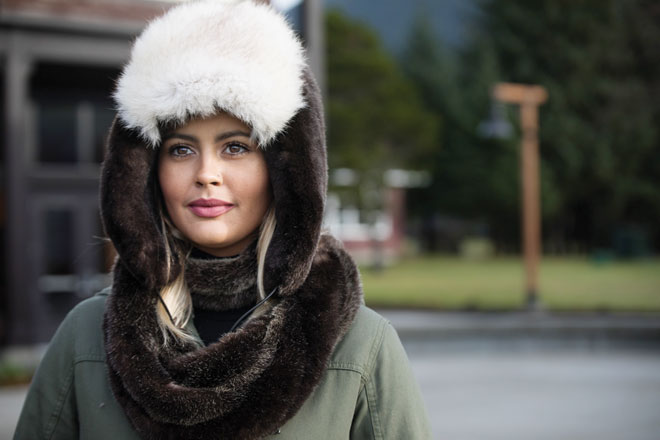
This sea otter and fox fur hat paired with a sea otter triple infinity scarf is a gorgeous combination.
In December, 2013, Robert journeyed by boat into Sitka Sound to harvest wild sea otters and was rewarded by bringing three of them home. But Robert knew nothing of the skinning or tanning process, the very start of it all, and fortunately fate intervened on his behalf. When he returned to the parking lot at the boat launch another Alaska Native was skinning an otter and willingly shared their knowledge. That set the stage for Robert’s entry into fur refinement. It was learn-as-you-go at every turn. There’s a well-written story by Alaskan author Marianne Schlegelmilch on Robert’s website sharing details of his learning quest. And now, with all this hands-on knowledge and experience earned, Robert is at the top of his game.
What caught my eye to begin with is the modern design Robert pairs with the traditional use of the fur medium. His pieces have a contemporary style about them that really appeals to me. Robert explained that he wanted to go a different route than everyone else. He wanted highly functional, beautiful products that don’t look like they were designed in the 70’s. “I want to make what people want,” he said. His pieces are made from sea otter and seal, but also fox, beaver, wolf and most recently polar bear.
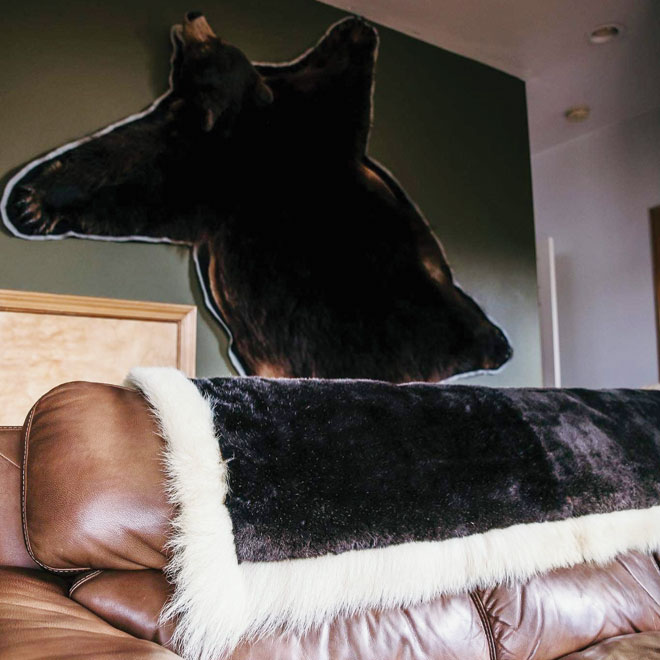
This spring Robert procured some polar bear fur for the first time and was able to take some of his designs to a new level.
This spring when COVID hit, Robert once again realized he would have to think outside of the box to keep his business going strong. In March, after much research, he was able to procure polar bear fur from an Alaska village. Everything Robert does has a planned subsistence nature to it. It’s the Alaskan way of life. These polar bears were shot in defense of life and property when they were causing problems in that local village. Robert feels good about buying that fur, helping those local Alaskans earn money and protect their people.
The hand-crafted pieces Robert makes are entirely custom. You can’t find patterns out there so everything he creates—hats, coats, vests, pillows, blankets, scarves, gloves, and more—is from his imagination. He says that’s what drives him. He loves being able to have a vision and the ability to make it come to life with his hands.
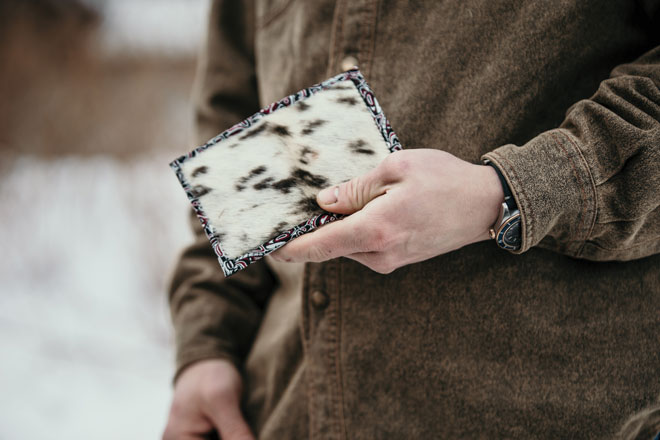
This sealskin, pocket-sized credit card holder would make an amazing holiday gift.
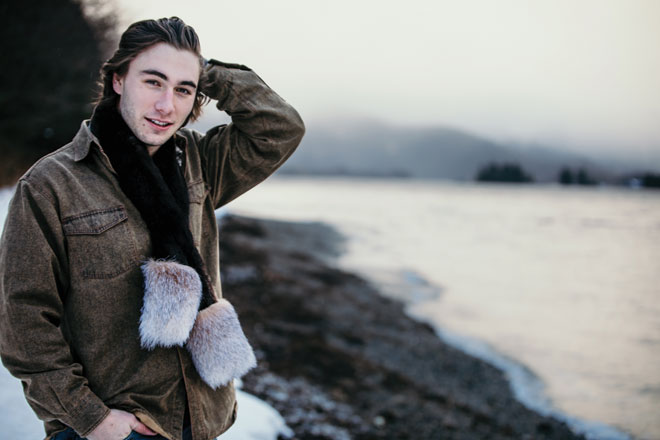
Multiple types of fur used in a modern way, like this sea otter scarf accented with crystal fox fur. Robert Miller’s fur artistry stand apart.
Robert loves making higher-end pieces. I have never seen anything like the luxurious sea otter fur comforter on Robert’s website. His hats are by far his best seller, however, because of their creative look and function. He can’t keep them in stock. He feels so fortunate to work closely with well-known mushers like Lance Mackey, as well as Jessie Holmes from the TV show Life Below Zero. Lance helped him design the mitts and hat, based on what would be good for the Iditarod. Fourteen or so Iditarod mushers wear his products and give him feedback. It’s really the ultimate field test and testimonial for his craft.
Like many of us, being outdoors and out on the boat is what helps keep his head straight, Robert shared. He harvests otters and seals himself, but he also pays other Alaska natives to hunt for him. Robert is very proud to be able to contribute to the community’s economic health, but that’s not all. He processes the meat from these animals and donates it to the local elders. In fact he donated over 2,000 pounds of seal meat to elders in Sitka last year. This year, he plans to make sure he gets out to hunt himself, and to donate more. Their culture has a beautiful way of taking care of each other.
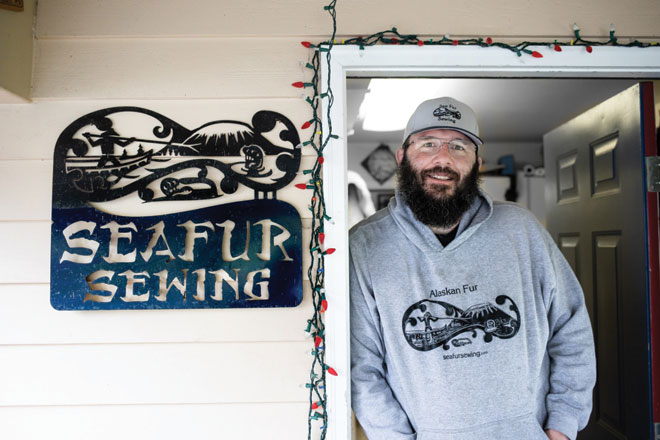
The artist Robert Miller is grateful to be tied to his Tlingit culture and also to give back to his community through his efforts.
Sustainability is important to Robert. He doesn’t hunt sea otters in Sitka at this time because the population is balanced, but there’s no shortage of seals. Harvesting seals helps contribute to the salmon population. He seeks other areas where there’s an over population to hunt sea otters.
One challenge of the fur refinement industry is educating the general public that it’s not illegal for them to possess sea otter fur as long as it has been made into a significantly altered authentic native handicraft. You can harvest sea otters without a permit from the U.S. Fish & Wildlife Service if you are at least one-quarter Alaska Native by blood, living in Alaska on the coast. While this law is meant to protect marine animals while still providing usage to Alaska’s native people, it’s also a source of frustration for Robert and his family. Robert’s three children are proud of their Alaskan Native heritage but they are not “native enough” by blood levels to handle his prized furs. There is nothing more important to Robert than being able to pass these traditions on to his children, but the law currently prohibits them from harvesting, crafting or selling certain marine mammals.
- Robert’s best-selling items are his hats.
- This mid-length sea otter coat is both stunning and highly functional in Alaska’s cold winter temperatures.
To help revive cultural traditions, Robert teaches fur refinement processing to several communities around southeast Alaska. He is also a fisheries biologist for the U.S. Forest Service. He does salmon habitat enhancement and restoration work throughout the Tongass National Forest. He’s gone all summer long in the field. “I love both my jobs.” Robert says. He loves being in the outdoors and being able to apply some of the same project visualization skills across his work and his art.
Robert’s art is truly beautiful. It’s also functional and meaningful. It warms my heart to know there are people out there whose lives are based on tradition enhanced with creativity, growth, philanthropy and family values.
Melissa Norris is Publisher of Fish Alaska and Hunt Alaska. She has an affinity towards wearable Alaskan art pieces made from fur, qiviut, and other natural fibers, and an admiration for the complete use of sustainable resources. (She says, “If Santa’s watching…a Sea Fur Sewing Double Infinity Sea Otter Scarf, please!!!)
This blog originally appeared as the Alaska Traveler column titled ‘Art, Harvest, and Sustainability’ in the December 2020 issue of Fish Alaska.

